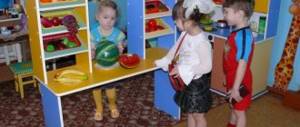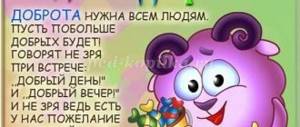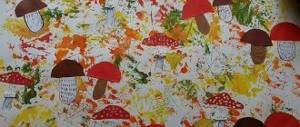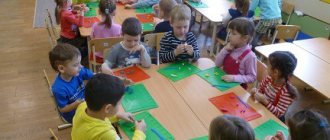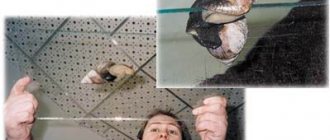Long-term event planning - table
Systematicity and consistency are one of the most important principles in pedagogy according to the Federal State Educational Standard. Tables for long-term planning of events for the calendar year help the teacher comply with these principles.
For your information! It is important to have notes for each lesson.
Classes on the topic “Kindness Rules the World”
Topic of the week: “Kindness rules the world” (middle group and preparatory)
Classes on traffic rules in preparatory groups of kindergartens
Goal: to explain the existence of good and evil, to convey why good is needed and what it gives.
Equipment:
- laptop;
- projector;
- multimedia board;
- loudspeakers;
- recording of the film "The Little Princess";
- book "The Little Princess".
Progress:
- “Guys, today we have a slightly unusual topic - “Kindness rules the world.”
- “How do you understand this statement? It is true that there is still more good in our world, and people do more good deeds than evil. It’s not for nothing that they say that “Good always triumphs over evil.”
- “I want to introduce you to an amazing work called “The Little Princess” by Frances Eliza Hodgson Burnett. Of course, you and I won’t have time to read the book during our thematic week, so we’ll watch the movie.”
- After watching the film, the children sit in a semicircle and the discussion begins. “Children, did you like the film and what did watching it teach you? That's right - it is important to be kind and merciful. Good people will always appreciate this. Sarah Crewe, despite her wealth, never boasted of it, was not arrogant, and was kind to everyone. And, finding herself in trouble, she received support from her friends, as well as from strangers who also turned out to be kind. She did not become bitter in her grief, although that would have been the simplest option. As a result, her father’s senior comrade saved her. Even while starving and wearing cast-offs, she was able to find strength in herself and help those who were even worse off than she was. This is the great power of kindness and great courage. Be sure to read this book at home with your parents."
- “Each of you can do such good deeds. It happens, of course, that we do bad things. You need to understand that we are all human, and people often make mistakes. The main thing is to find the strength to apologize and make amends. You need to be able to draw conclusions from such situations, learn from mistakes and try in the future to ensure that things are only good.”
Drawing class
A drawing lesson in a preparatory group can be conducted using any technique, since children 6–7 years old already have a fairly good command of various materials for creativity.
Drawing develops motor skills well
Topic: “Kindness rules the world.”
Goal: to study the technique of drawing “in the raw”.
Equipment:
- drawing tables;
- plastic napkins;
- simple pencils;
- erasers;
- watercolor paper (A3 format);
- brushes;
- watercolor paints;
- water containers;
- rainbow pattern.
Progress:
- “Guys, today’s topic is about kindness. We have already discussed this necessary quality for a person. We will depict kindness in the form of a bright butterfly against a rainbow background.”
- “First sketch out the drawing in pencil. Today we will work in the technique of drawing “in the wet”. To do this, take a sheet of paper, a large brush and a jar of water. Apply water to the paper with a brush. Your task is to thoroughly moisten the surface of the sheet with water.”
- “The “wet” technique involves painting with watercolors on a wet sheet like this. Now your colors will blur a little and mix with each other. There is no need to be afraid of this, because this is the essence of this technique.”
- “Start by drawing a butterfly. Choose rich colors for it, take more paints per brush: blue, green, yellow, purple or another.”
- “If desired, paint a colored pattern on the wings. The background will be a rainbow. Remember what colors it has? Look at the pattern and remember the clue: “Every hunter wants to know where the pheasant sits.” The first letter of each word gives a clue, namely: red, orange, yellow, green, blue, indigo, violet.”
- “Notice how beautifully the colors flow and mix with each other. It looks very picturesque. Such works look more impressive from afar.”
- “After the drawing has dried a little, take felt-tip pens and finalize the small details: antennae, patterns, eyes. Maybe your imagination will tell you something else. When everyone has finished their work, we will all organize an exhibition of drawings together! We’ll issue a passport and sign your first and last name.”
Signs of child hyperactivity and its causes, what does it mean

